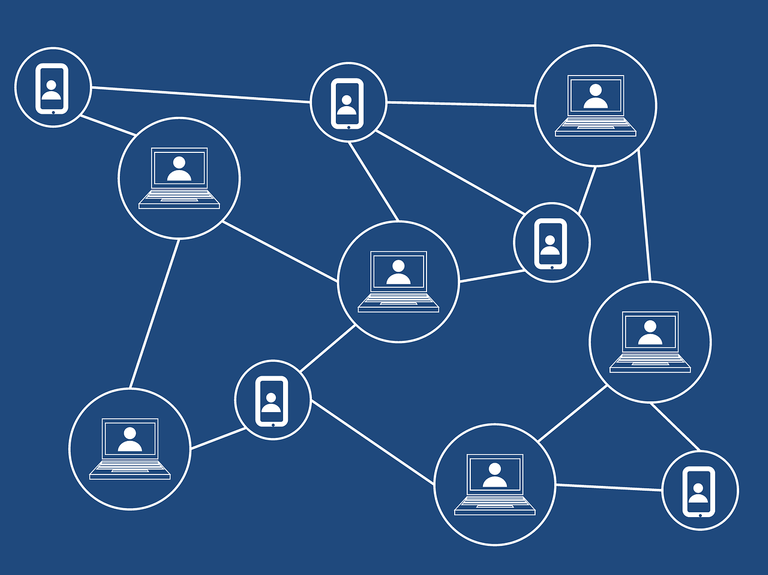Unleashing the Power of Blockchain: Revolutionizing Industries
The world continues to grow and develop in ways we never thought was possible. The use of technology continues to broaden in scope and use, which was what birth the blockchain. The blockchain was created to give everyone ordinary people freedom while escaping government control and establishing a sense of transparency. Since the blockchain breakout, it has continued to be integrated into other fields and other technology. It is very common to see government building on the blockchain against just building on the internet. Even though cryptocurrency is one by-product of the blockchain, the use case of what blockchain could actually be used for is still in the works as new use case continues to develop every day. It is very important to know that the blockchain has a lot of uses beyond cryptocurrency and making payments.

With that said, it is important to understand what the blockchain is, its benefits, its uses and how numerous industries use it to optimize their business process and enhance productivity. It is also essential to discuss the types of blockchain while touching on a list of projects the blockchain technology has been used to drive.
What is a Blockchain?
Many people confuse cryptocurrency with blockchain, while others, such as myself, use them interchangeably. This is understandable, as cryptocurrency was innovated while leveraging blockchain technology and capabilities; however, to say they are the same is wrong. Cryptocurrency means the currency in the form of a digital form on a blockchain; however, Blockchain is a lot more.
According to chat GPT:
Blockchain is a distributed ledger technology that enables the secure and transparent recording of transactions across multiple computers or nodes. It operates without intermediaries, such as banks or government institutions, making it resistant to fraud and tampering. The key components of a blockchain include blocks (containers for data), cryptographic algorithms, and consensus protocols.
It is very important to understand what blockchain is unless it will be confused with so many other concepts, like confusing it for the internet or cryptocurrency or just a log of data. From the definition above, we can see that cryptocurrency shares similar features to Blockchain. However, the blockchain expands further to enable a secure platform which records all its activities on a ledger, thereby fostering transparency. It goes beyond means of payment, as cryptos are generally used for.
What are the Benefits of Using a Blockchain
Now that we have defined and explained what the Blockchain is, it will be appropriate to state the benefits attached to the usage of a blockchain to drive the point home. The benefits attached to the Usage of Blockchain are:
- Trusted and Decentralised:
From the meaning of the Blockchain, it will be easy to denote that its decentralized architecture has made it quite impossible for one corporation or individual to lay claim or have absolute control over its network. Blockchain takes and gives power to the public, and this makes it hard for the government to control or direct the activities and affairs of people on the blockchain. This makes it trusted by all, unlike the traditional centralized platforms in which the owner or the person in charge could manipulate the platform for selfish reasons and gains unknown to the users of such a platform. Perpetrating fraud on a blockchain is quite hard to accomplish as the mechanism employed makes it tough to actualise as transactions and activity are recorded transparently on a ledger.
- Transparency and Accountability:
Trust is easily achieved as the blockchain offers a trustless platform where transactions are audited, verified and logged on a transparent network, accessible to all parties involved in the transaction to view. Due to the decentralized feature of the Blockchain, the need for having an intermediary is removed, ensuring that every activity conducted on the blockchain is transparent for all to see. Accountability and trust are attained as risks such as fraud and corruption are eliminated through the transparent logged activities available to all to see. These logged transactions on the blockchain are non-repudiable, uneditable, incorruptible, and a source of reliable data stored for eternity.
- Enhanced Security and Improved Efficiency:
One thing that the Blockchain is now for is the speed of competition of any transactions and activity, and the key reason for this is that people communicate or conduct transactions without the need for an intermediary. With intermediaries cut out, The cost of conducting a transaction is reduced, boosting efficiency.
Also, all these transactions are secured, as every communication is encrypted while in transit and can not be intercepted or changed by an external party. Data integrity is assured, while Blockchain technology relies on cryptographic algorithms to attain data security. The possibility of Tampering and altering data is next to zero. This is one of the confidence boosters that organisations processing and handling big data need to enrol and migrate to the blockchain.

Understanding the types of blockchain
Knowing that blockchain could be private or public is key to how organisations could leverage them. Many people confuse examples of blockchains with the types of blockchains, and hopefully, the article states and educates us on their differences. They are over 6 types of Blockchains. However, this post will speak on just four. These four are explained briefly below:
- Public Blockchain:
The public Blockchain is the most widely used and embraced as it is opened to the public; it also births the first cryptocurrency, Bitcoin. That caused the misconception of viewing the blockchain and cryptocurrency as the same. However, that's not true. It is opened to the general public without restrictions to numerous executable activities such as public block, allows join, read, write, and participate in the consensus mechanism. Operating on a public blockchain gives freedom to anyone to interact and validate transactions in which a ledger of the activity is kept. Mechanisms such as Proof of work and Proof of stake are employed on a public blockchain to ensure a trustless system, as a proof is always required before any transaction is activated. Centralisation of authority is eliminated using the Public blockchain as this technology offers transparency and openness, which is the highest level of security and trust.
- Private Blockchain:
Ever wondered what blockchain is used by government institutions, Business corporations and healthcare? They all use a private blockchain, a central authority and starkly contrasts the public blockchain, which is accessible to the public. These private blockchains offer more privacy and security to organisation processes; the firms using this also have more controls on the access controls, authorisation and authentication of everyone's activities on the blockchain. The organisation uses this type of blockchain to optimise their operations and processes transparently and without involving intermediaries. It is always restricted to the institutions using them, and examples of industries this could be found are finance, supply chain management, and healthcare. It is also used in an industry which entails data sharing among trusted participants.
- Hybrid Blockchain:
This occurs when an institution or an organisation employs the service of both the public cloud and the private cloud. This is done for many reasons, like creating and fostering trust between the customers and the firms in question by being transparent. Corporations which has integrated both public and private blockchain may allow certain data or transactions needed to make a decision or keep the public informed to be public and visible to all. However, the internal processes and specific data of such firms will still be kept and encrypted on the private cloud to ensure the confidentiality of such information. They will be available to a select few approved audiences for monitoring processes. Companies could use these two blockchain at a role to beat down cost while also optimizing their business operation through the mechanisms and distinctive features both blockchains offers.
- Consortium Blockchain:
This employs the feature and model of hybrid blockchain by utilising the features of both public and private blockchains. What differentiates an Hybrid from a consortium is that in a consortium blockchain, different corporations or firms engage and use a single network of a predefined set of nodes to control the consensus and governance. However, a hybrid blockchain involves just a singular organisation employing both public and private blockchain features to run its operation. Decentralization and privacy are achieved using the consortium's blockchains as many of these firms agree on which entities to grant access and trust while maintaining certain access controls.
Other notable mentions of the types of Blockchains are Permissionless and Permissioned Blockchain. They are the opposite of each other. Permissionless blockchain does not need to verify the identity of someone before granting that person access to that network. However, Permissioned access is restricted as authorization and authentication are mandated for all participants, and a central authority gives this permission.

How is the Blockchain shaping Industries and ways of things
The blockchain is indeed here to stay due to the numerous benefits that come with its usage. Lots of Industries have leveraged it; while we might be used to some, there are many other ways the blockchain has changed the ways many industries do things to optimize their business operations. Among many other ways, these few were explained:
- The financial industry has experienced a real change in how financial services are accessed. Payments could not be made from one country to another without the need for an intermediary who slows the whole process and charges high fees as a cost. The growth of cryptocurrency has further made payment easier than ever before. The growth of the financial industry was further enabled as De-Fi was introduced, and this changed the look of things as a more traditional approach to financial activities only this they are decentralized without a single unit controlling them. Assets transfers are much easier to complete now as the risk of fraud has been minimized. Investing, earning passive income and loan disbursement are now a thing on the blockchain and this numerous industry taps from these products. With the smart contract mechanism on the blockchain, actualizing any financial product is a matter of when.
Through the Blockchain, the entertainment and creative society can now protect their Intellectual properties. Through the ledger, which records the timestamps of every activity of all users, every piece of your content, whether music, movies, paintings or other artistic content, is protected and more secure without the need to involve a third party. Blockchain can revolutionize intellectual property management by providing a secure and immutable ownership, licensing, and distribution record. Artists, musicians, and content creators can protect their work and prove ownership without relying on intermediaries. The decentralized nature eliminates the need for expensive legal processes and enables direct peer-to-peer transactions, ensuring fair compensation for creators.
Blockchain as revolutionaries how the healthcare sector conducts its business. Through the blockchain, the process and access to patients' information have become much easier to retrieve while also ensuring privacy to those data as those who can access it are authorised. The Blockchain has helped eliminates the risk of the unavailability of patient data. Aside from this stated fact above, through the use of the Blockchain, lesser human errors have been achieved, thereby promoting the reliability and accuracy of health-related data. Also, patients tend to have a big say on how their data are accessed by the healthcare providers as granting access to these files rests on them more. Lastly, blockchain-based systems can streamline clinical trials, drug traceability, and supply chain management of pharmaceuticals.
The gaming industry has changed through the blockchain as it has helped provide a platform for anyone to securely build and make access to what was built reach many people on a budget, unlike the traditional ways of gaming. Removing intermediaries has helped game developers focus on what is important while developing their games. Coupled with this fact, earning while gaming has become a norm in today's gaming world as the blockchain has provided a secure way for game developers to reward games playing their games. With NFTs and metaverse, the gaming world has become more interesting as these two have further intensified the adoption. And the market for the exchange of this token to something of more value is free without the help of a third party.
- lastly, supply Chain Management have been impacted greatly by the Blockchain as the transparency and end-to-end visibility features of this technology have made a lot of industry embrace it. Industries such as healthcare, supply chain management, Logistics, Travel and even aviation have embraced this technology as it makes work easier and with lesser cost. Parties involved could track and monitor closely the movement of their product all through the supply chain process, and this aid in ensuring the integrity of delivery while eliminating a form of counterfeit that could occur along the way. Using this technology for supply chain management has been made possible through verifying and logging all activities on the ledger, making it easier for all interested parties to track the movement after the origin has been verified and boosting trust.
https://leofinance.io/threads/lebey1/re-lebey1-wuzpcxmy
The rewards earned on this comment will go directly to the people ( lebey1 ) sharing the post on LeoThreads,LikeTu,dBuzz.